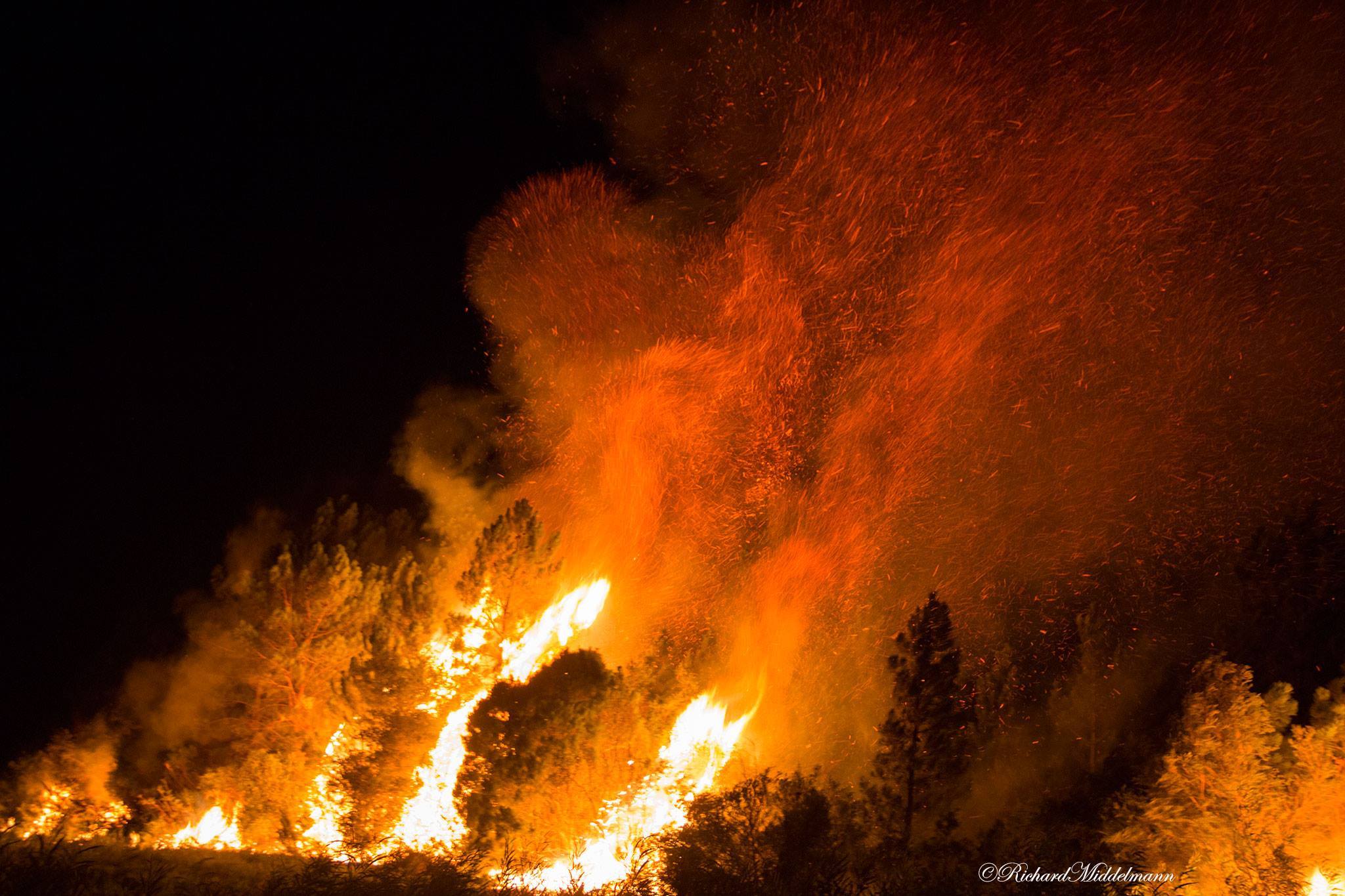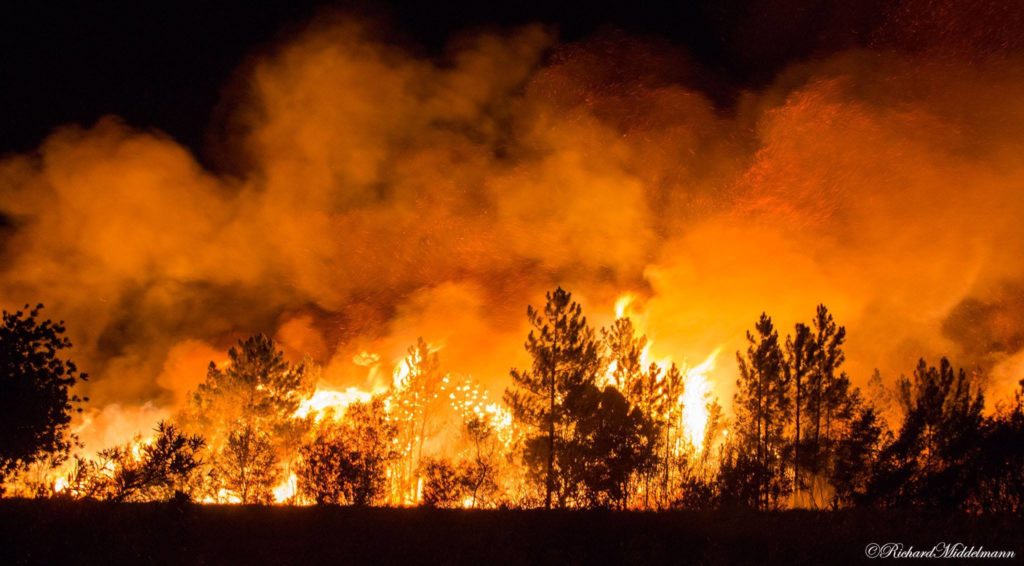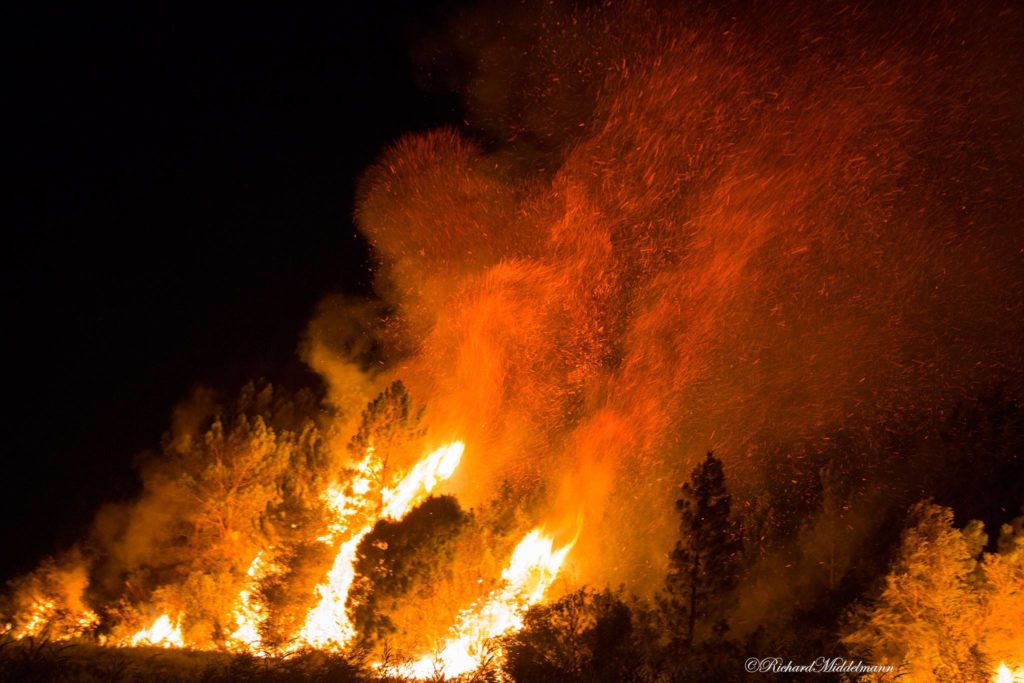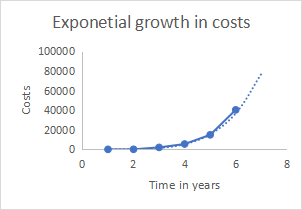
Fire a natural occurrence in the Fynbos biome and specifically in the Bot Estuary environs is reported on.
Extensive research on fire in the Fynbos biome has been summarized in (PDF) Ecological research and conservation management in the Cape Floristic Region between 1945 and 2015: History, current understanding and future challenges (researchgate.net)
Another national report by the same lead author dealing with biological invasions, 2017 in the link below
The indigenous vegetation developed with fire as a natural occurrence in the Overberg over thousands of years. Many species are so well-adapted to fire that they require a periodic burn in order to complete their lifecycles. Most of the rest of the species are well-adapted to fire and recover rapidly from occasional fires. Some species occur in permanently wet areas and generally grow into large trees and do not usually burn from a general fire. Since man arrived on the scene, he has changed this natural environment in many ways. Firstly, he has caused large soil erosion which has caused many areas to be drier. Secondly, he has introduced many exotic species, which use much more water, therefore also causing the environment to be drier. Many of these introduced species burn much easier and with a greater intensity. Thirdly, man is the cause of more frequent fires, intentionally or unintentionally.


Pictures of the Fisherhaven fire 2018 in mild wind conditions, imagine a gale force wind.
Fires in the Overberg are, therefore, much more frequent and burn with a much higher intensity than they did in the past, and do much more damage to the vegetation, often causing more erosion, further spread of some of the exotic species and the reduction or elimination of many indigenous species which are unable to complete their lifecycles and even more frequent devastating fires. This makes the problems of maintaining an adapted to fire, range of many stable species, even worse. This leads to further environmental degradation, which is unstable and not sustainable in the long term.
The direct costs of fire damage, fire control and management of the environment are rocketing out of control. Added to these problems is climate change, which for the Western Cape means a drier environment, more prone to more intense fires.

Figure 1 Costs over time
We can still save the local situation. We have the knowledge, techniques and tools to significantly reverse the situation and Botfriends has demonstrated this on a small scale. Fire risk has been significantly reduced, by removing damaging alien vegetation and we are working with nature to change the species composition to a much more stable and sustainable vegetation which is improving every year.
A funding proposal, the BACP, to expand the Botfriends project to cover much of the Ward 8 area has been put forward. This will include from Hoek van die Berg, Hawston, the mountains and Fisherhaven, down to the sea and the estuary.
A number of short articles have been written on certain aspects of fire in the past. These include ‘Fire load versus fire intensity’. Not only do the invasive species add to the fire load by growing 2-4 times as big as the indigenous vegetation but they increase the fire intensity by as much as five times. In any given situation this can change the situation from a controllable fire to a situation where even the helicopters do not function, such as the Fisherhaven fire, 2018, in mild wind conditions.
‘Fire as a tool or extreme risk of damage’, argues the point that we cannot delay using fire as a tool in invaded areas no matter the risks involved in a controlled fire, in conditions of our choosing rather than a wild fire in gale force winds where the risks of damage to infrastructure become enormous.
‘Natural or unnatural boundaries in dealing with a disaster’ deals with another aspect of disaster management. Fires do not respect artificial boundaries drawn by people with the appropriate changes of responsibility of different owners of land.
‘Fire and exotic regrowth’, is an estimate of how much the invasive species multiply after a fire if there is no follow-up on dealing with seedlings when they are young and can be taken care of cheaply. The massive growth of exotic seedlings after a fire, if dealt with, reduces the seedbank in the soil and the benefit of this is that the following year there is a smaller seedbank of exotics.
The Knysna fires are a case in point. The natural forest has not burnt out in thousands of years. Even the mature pine plantations have survived well enough to make it economically viable to plant pine plantations. Most of the damage in Knysna was caused from a lack of control of alien species, over the previous decade. A short article was written on the ‘Fires in Portugal’, a very similar situation to what we have here in Ward 8 and had in Knysna.
After the fire on Afdaks farm in 2017, a meeting was arranged with the fire chief of the Overstrand to discuss the fire hazard present in Fisherhaven and surrounds. These were general discussions about the great opportunity presented by the burnt-out area of Afdaks to put in a controlled fire to the south and east of Fisherhaven. A document was prepared and handed over, ironically entitled ‘Comment on the fire hazard proposal’, nothing to do with the policy document below. No controlled burns were made.
In 2018 the OSM fire department began redrafting the fire regulations. The document from the fire department was the ‘Policy for the clearing and maintenance of vegetation creating fire hazards 2016’. Detailed comments on the policy document of the fire hazard proposals were forwarded to the fire department by Botfriends together with other environmental organisations. These included the Kogelberg branch of the Botanical Society, Kogelberg Conservancy Committee (document below), Betty’s Bay and Pringle Bay Ratepayers and Cape Nature (document below), who all agreed that the regulations as they existed were illegal in that they did not consider the environmental regulations (NEMBA, the laws governing indigenous vegetation). A slightly amended draft from the OSM, ‘Policy for the clearing and maintenance of vegetation on open land March 2016’ was issued. Note the change from ’vegetation creating fire hazards’ to ‘vegetation on open land’ and meetings with the fire department and the above bodies were arranged.
Having received some of the documentation from the other bodies, the detailed Botfriends comments were redrafted. These were forwarded to the fire chief of the Overstrand together with the other documents discussed above in 2017, before the meetings. Unfortunately, the fire regulations have not recognised the real difference between indigenous vegetation and invaded vegetation with regard to their fire characteristics.
The meetings were somewhat unproductive, the fire chief would not recognise the difference between “cleared” and “invaded by aliens” vegetation. He claimed this was not his responsibility. Cape Nature drew attention to the fact that the fire department would not be able to determine if NEMBA activities would be triggered by clearing or damage to indigenous vegetation, in constructing firebreaks, amongst other comments. A brief comment on the meeting was prepared by Botfriends and a copy of a document from the Kogelberg branch of the Botanical Society was also received by Botfriends (see below).
The fire department together with the environmental department of the OSM then redrafted the policy document as ’Policy for creating and maintaining fire-wise vacant erven within urban areas, Sept 2018’. The subtle change in the wording of the document severely limits the scope of the document and most of the changes recommended by Botfriends, Koegelberg branch of the Botanical Society and Cape Nature have been ignored. Neither the fire department nor the environmental department will take responsibility for having a fire policy document which takes account of reducing fire risk and complying with the environmental laws. Botfriends drafted a detailed report on the Sept 2018 policy document ‘Comment on Policy for: Creating and maintaining fire-wise vacant erven within urban areas’. A summary document together with Bruce Bayer, a local environmentalist, was prepared, with the same title to circulate to members (see below).
The final report from the forensic investigator on the Knysna fires acknowledged the effects of the invasive species on the severity of those fires. These lessons appear to not have been learnt locally. A similar situation applies to the devastating Australian fires. Control burns of underbrush and firebreaks have been abandoned and have contributed greatly to the severity of the devastation cased by fires. Note that the three worst aliens prevalent in the Bot River estuary area are Port Jackson, Australian Myrtle and Rooikraans, all Australian imports.
The situation in Ward 8 has become considerably worse than it was in 2017. We were very lucky that the fire between Hawston and Fisherhaven occurred in gentle South Easterly wind conditions. If there had been a howling South Wester, we could have been worse off than Betty’s Bay. Even helicopter support failed on the day of the Fisherhaven fire. In fact, the areas where water was dropped on the fire, burnt anyway but now have a higher proportion of dead wood and bigger regrowth of Port Jacksons from unburnt stumps.
Some control burns are been carried out in the Overstrand, but Ward 8 seems to have been ignored again. Middlevlei access road is surrounded by extremely high fire risk vegetation. How do you evacuate the area if a wild fire in windy conditions seals off the road? The policy document effectively ignores this area as not being part of the urban area, even though it poses such a high risk of fire sweeping through Middlevlei. The area south of China Marais Avenue, in Fisherhaven, is now almost as high risk as it was before the recent fire in gentle wind conditions. North of Hawston is a very high-risk area, with dense vegetation of exotics right up to the housing. This will be especially high risk, if a dry North-Easter blows (common in this area). Fisherhaven east and west is also a higher risk than it was in 2017. Excessive growth of Port Jackson and Myrtle within Fisherhaven/Hawston could cause a repeat of the Betty’s Bay fire this summer in this area.
Most of the fires which occur are not from a natural occurrence, even the disastrous fires we refer to as ‘Wild Fires’ are usually fires started intentionally by man and not as fire a natural occurrence say from a lightening strike. Fire as a natural occurrence usually only occurred at 10-30 year intervals. The now much higher occurrence of fires influences the vegetation which promotes bigger and more intense fires than Fynbos is adapted to.
The situation in 2017 in Ward 8 was very high risk for a wild fire disaster. The disaster happened in Betty’s Bay in 2018, mainly due to the proliferation of alien species. The evacuation of Middlevlei in the 2016 fire has a higher fire risk now than it did then, mainly due to excessive growth of Port Jackson and Rooikrans.
The elimination of alien vegetation, which is a legal requirement, needs urgent attention before there is a Hawston/Fisherhaven disaster. The techniques and correct management to establish stable, sustainable vegetation with very much lower fire hazard risks is available. This has been established by Botfriends, with techniques and costs on the ground in Fisherhaven, on a small scale (see Botfriends challenge). The status of biological invasions in the Bot Estuary area has been extensively reported on by Michael Austin. We need to expand this program urgently to the much larger area. Botfriends offered its services to help draw up the fire regulations documents as have some of the other environmental organisations. Time is of the essence as further delays keep making the risks greater and a devastating fire in this area will not wait.
Michael Austin
As the Chair Botfriends (email [email protected])
This document provides detailed data on fire a natural occurrence for the report ‘Land use and an ecological plan for the Bot Estuary‘. Elsewhere on Greenheart the interaction between fire and biodiversity is discussed, look in the categories section of the Home page for a selection of over 100 posts and on Greenheart Facebook page.
Fire data files mentioned in the text can be downloaded below

Recent Comments